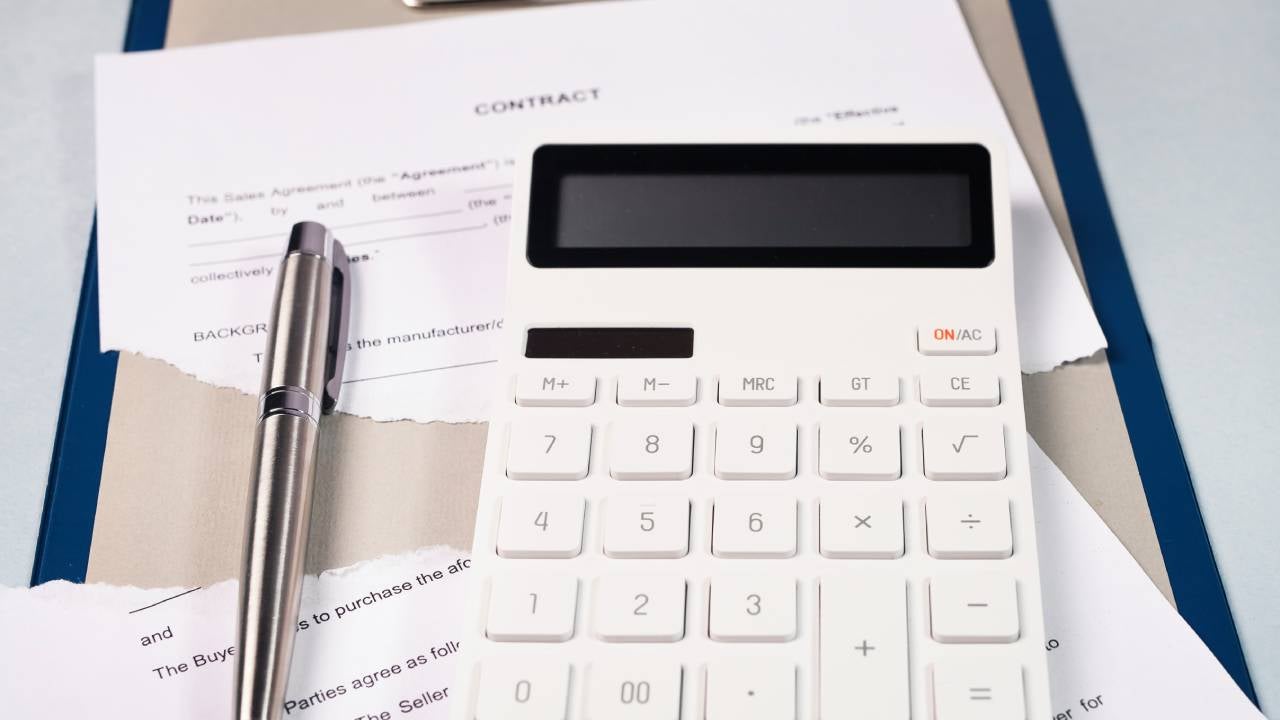Banks are not one-size-fits-all. When you’re evaluating where you want to park your money, there are several factors you’ll have to weigh to find the right one for you. One major consideration you’ll need to consider: fees.
Financial institutions charge various kinds of fees for their services, some you may not even realize exist until you’re hit with a charge in your account. But there is an upside: knowing which fees your bank charges, and how to avoid them, can help you trim costs in the long run.
What are bank fees?
Bank fees are any fees your bank charges you for doing business with them. Common fees you’ll come across are ATM fees, paper statement fees, overdraft fees, among others. When you’re considering signing up for an account with a new bank, you should take the time to explore its website or even visit a branch in person to ask about all the potential fees you might incur.
According to 2019 data from the Consumer Finance Protection Bureau, overdraft and non-sufficient funds (NSF) revenue generated an estimated $15.47 billion worth of revenue for banks.
“For some banks, fees can be a major revenue driver, though the share varies widely by institution. They can also offset operational costs,” says Meghan Greene, senior director of research at Financial Health Network. “It’s fairly common to be charged one of these fees. Our nationally representative FinHealth Spend survey found that 49% of banked households reported paying some type of fee for their bank accounts in 2021.”
10 common bank fees
Thanks to the Truth in Savings Act all financial institutions are required to disclose the fees they impose on their customers and when. This was implemented as an added layer of protection for consumers to make it easier for them to comparison shop and choose the right bank account to meet their needs.
“For many consumers looking to cut costs and find extra cash, look closely at your spending and understand what is coming into your bank and what is leaving,” says Daniel Tobias, certified financial planner at Passport Wealth Management. “From there, look at what services you spend most on and research their fee model.”
Here are the most common fees banks charge—and how to avoid paying them:
1. Monthly maintenance/service fee
This is a fee that banks charge to cover the cost of maintaining your account each month. Some banks won’t charge a monthly fee at all or will waive it if you maintain a certain balance in your account.
Others may charge as little as a few dollars, or upward of $15. Keep in mind that opting for a low or no-fee account could help you save more money—but it may come with its own set of limitations. For example, some low-fee or no-fee accounts may cap the number of withdrawals you can make each month. You’ll want to keep this in mind when choosing the right account for your spending habits.
How to avoid it: Choose your account carefully. Ask your bank if they charge a monthly maintenance fee and what their conditions are for waiving it. If you’re able to meet minimum balance requirements or make a certain number of purchases from your account each month, you may be able to skip this fee altogether.
2. Out-of-network ATM fees
Each bank has its own network of ATMs and won’t charge you an extra fee for withdrawing your money. However, if you venture outside of that network and use an ATM owned by a different bank or a third-party provider, you’ll likely be charged a fee. These fees will cost you $4.66, on average, which may not seem like a lot if you need some quick cash. However, if you plan to make multiple withdrawals, it can add up over time.
How to avoid it: If you absolutely must make a withdrawal from an out-of-network ATM, try to withdraw a larger amount of cash to avoid racking up multiple transactions in a short amount of time and paying more in fees than you need to. “Like any financial service, it’s important for consumers to understand account terms,” says Greene. “ATM fees are generally waived, for example, if the ATM is within network, and some institutions offer waivers or refunds out of network as well.”
3. Overdraft fees
Most banks will charge you a fee when you spend more than what you have in your account. For example, if you have a balance of $100 and spend $150, the bank will process the transaction, but you’ll be responsible for the $50 that the bank funded, plus an additional fee for overdrawing your account.
The overdraft fee will vary from bank to bank, but it can be as high as $35 per transaction. If you aren’t regularly monitoring your account, you could end up paying hundreds in fees for even the smallest transactions.
How to avoid it: Set up account alerts to receive a notification each time you make a purchase using your card or if your balance drops below a certain threshold. That way, you’ll always have enough money in your account to cover your purchases.
Another option: Ask your bank if they offer overdraft protection. When you enroll, your bank will move the money you need to cover your purchase into your account from a linked or secondary account. This feature will likely require you to pay a monthly fee but paying a few dollars each month to ensure that any purchases that may cause your account to go below zero will still be approved and not incur an overdraft fee could still help you save.
4. Insufficient funds fees
Some consumers confuse overdraft fees with insufficient funds fees, but they are slightly different. Insufficient funds fees are charged when you don’t have enough available in your account to cover a purchase and the bank rejects the transaction. Insufficient funds fees will typically be about the same amount as an overdraft fee.
How to avoid it: Tracking your spending, setting balance alerts and opting into overdraft protection could help you avoid insufficient funds fees.
5. Paper statement fees
Your bank may charge you a fee for printing and sending you a physical copy of your bank statement each billing cycle. It’s usually around $1 to $5 each month, but if you don’t read your paper statement, it can be a waste of money.
How to avoid it: Log into your bank account and review your settings. You should have the option to enroll in paperless statements. If you still prefer a paper statement, some banks don’t impose a fee for sending you one.
6. Wire transfer fees
Wire transfers lets you send money to another person’s account immediately, but it isn’t free. The fee you pay will depend on whether the individual you’re sending money to uses the same bank as you or if you’re sending it to a bank account in a different part of the world. Banks may also charge you for receiving a wire transfer.
How to avoid it: Some financial institutions will waive this fee or offer you a discount if you wire the money online, rather than requesting the assistance of a customer service representative. You could also consider alternatives to sending funds like a paper check or mobile payment app like Venmo or Zelle.
7. Account closing fees
Some banks will charge you account-closure fees if you close your account within a certain time period after opening it. This is done to retain customers or prevent new customers from taking advantage of introductory perks and then moving on to a different bank. Most financial institutions will charge this fee if you close an account that is less than 180 days old, although some have shorter windows.
How to avoid it: Make sure the bank you choose meets your long-term needs before opening an account. If you end up deciding that it isn’t right for you, try to stick it out past the cutoff window to avoid having to pay an account-closure fee.
8. Dormancy fees
When your account goes dormant, banks have a certain amount of time to nudge you to use your account before the government steps in and has the power to decide what happens to the funds in your account. Usually, banks will wait until you’ve been inactive for at least six months before charging you a dormancy fee.
How to avoid it: Consider making a regular deposit or withdrawal from this account. You can also schedule one of your regular recurring payments from this account to keep it open and active, even if you aren’t using it on a regular basis. If you find that you have no use for the account, consider closing it to avoid accumulating too many monthly inactivity fees.
9. Foreign transaction fees
Any time you make a purchase overseas or online from an international merchant, you’ll likely pay a foreign transaction fee. This fee is split between your credit card issuer and your credit card network and is charged as a small percentage of your total transaction, usually 1% to 4%.
How to avoid it: Not all banks charge foreign transaction fees. However, if you’re a frequent traveler or online shopper, it might be worth opening a new account with a bank like Capital One or HSBC—both waive foreign transaction fees when using select products to pay for your purchases.
10. Lost card fees
We’ve all been guilty of losing or misplacing a bank card. But losing track of yours could mean paying a fee to have it replaced, plus an extra fee to have it replaced in a timely manner.
How to avoid it: Ask your bank if they’d be willing to waive the replacement fee. Sometimes, your bank might cut you some slack if this is your first time losing your card or if your card was stolen. If there’s no way around the replacement fee, you could save on the cost of having your card expedited by opting for the standard processing and shipping time and using a mobile wallet or cash for a few days while you wait for your new card to arrive in the mail.
The takeaway
Who you choose to bank with can make a huge difference in how much you’ll fork over in fees. Be selective when choosing where to keep your money, and if you find that you’re spending more in fees than you’re comfortable with, it may be time for a change.
“No matter your financial situation, be sure to seek out financial partners that are honest and transparent in their fee structure,” says Tobias. “Believe it or not, there may be room to cut your expenses by identifying these hidden fees in everyday purchases.”
EDITORIAL DISCLOSURE: The advice, opinions, or rankings contained in this article are solely those of the Fortune Recommends™ editorial team. This content has not been reviewed or endorsed by any of our affiliate partners or other third parties.
10 common bank fees that are costing you hundreds—and how to avoid them - Fortune







/cloudfront-us-east-1.images.arcpublishing.com/gray/XSV4L5JYE5EX5JF3ZQBBWH77SI.JPG)



